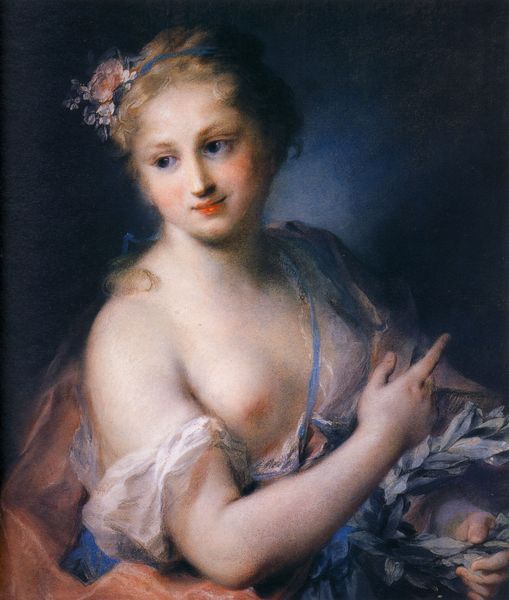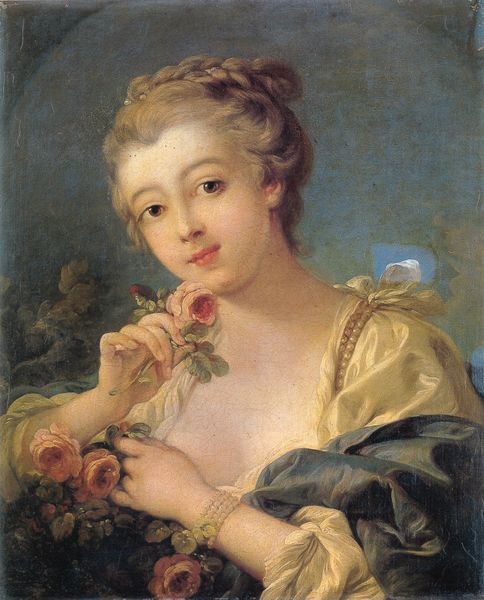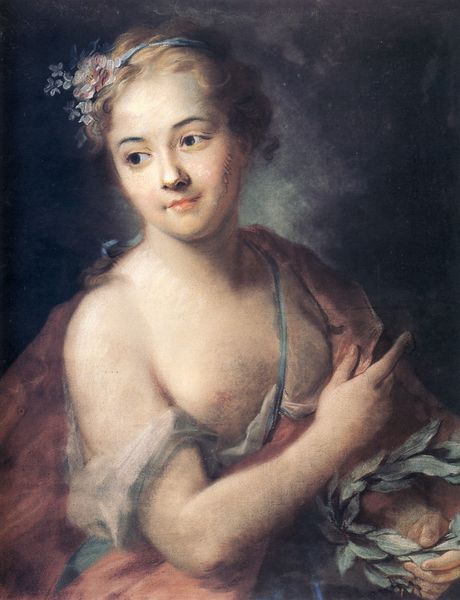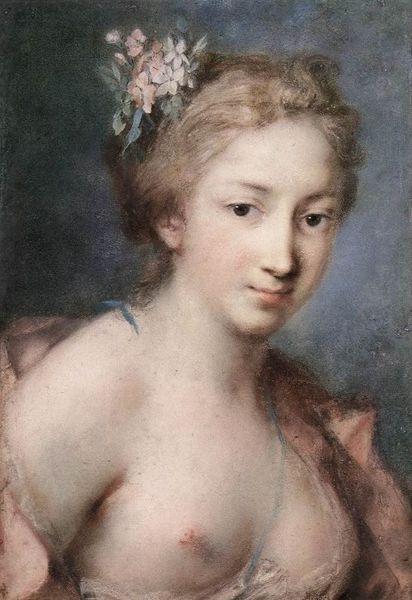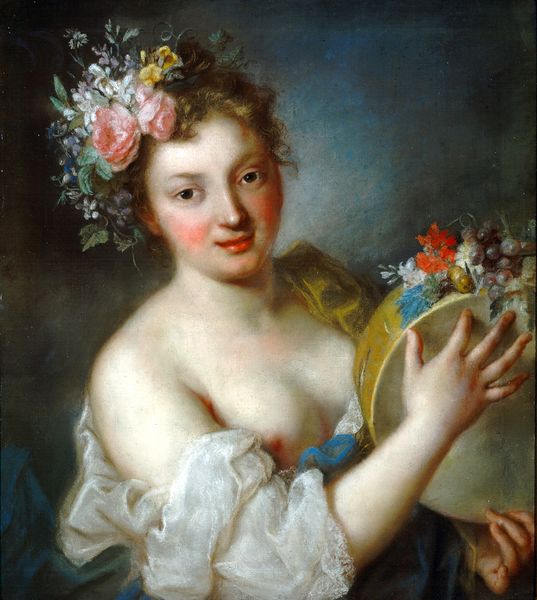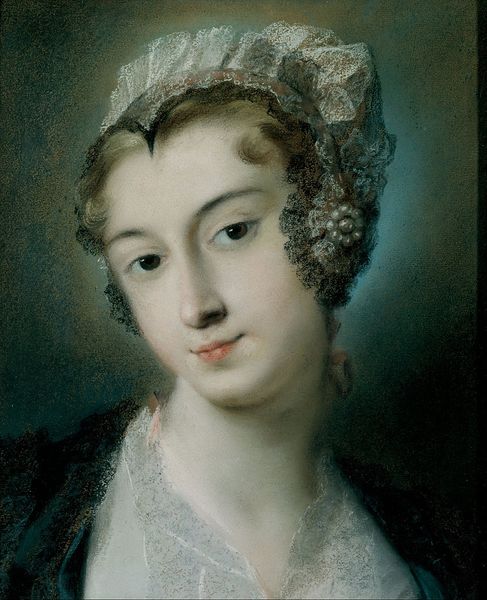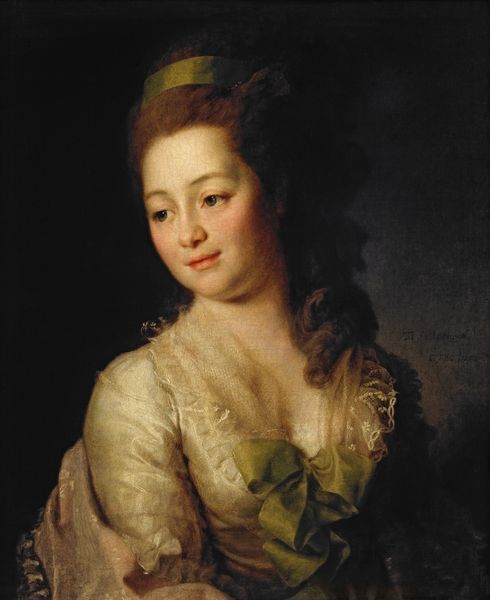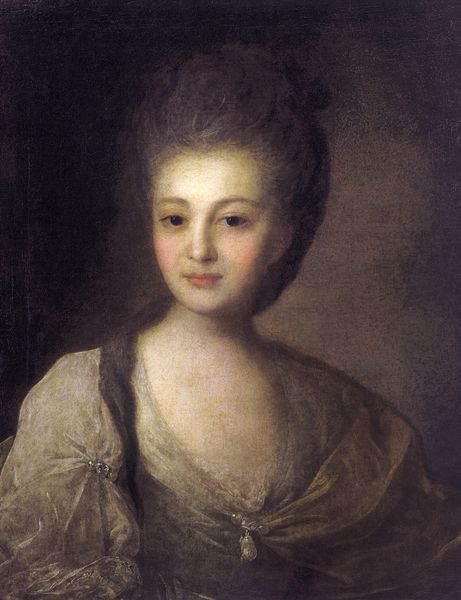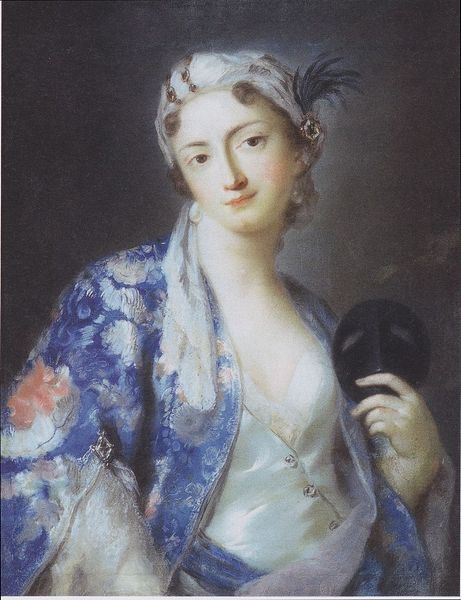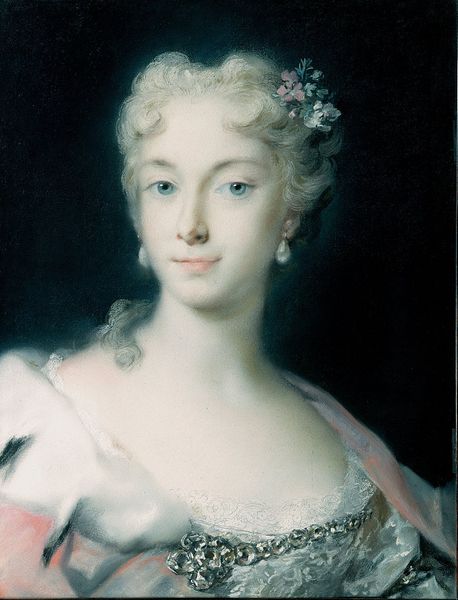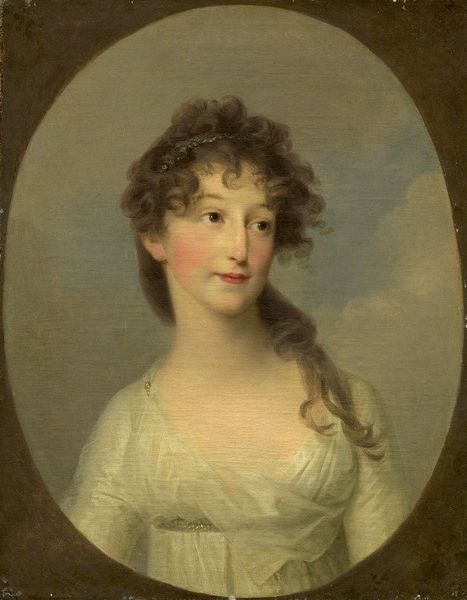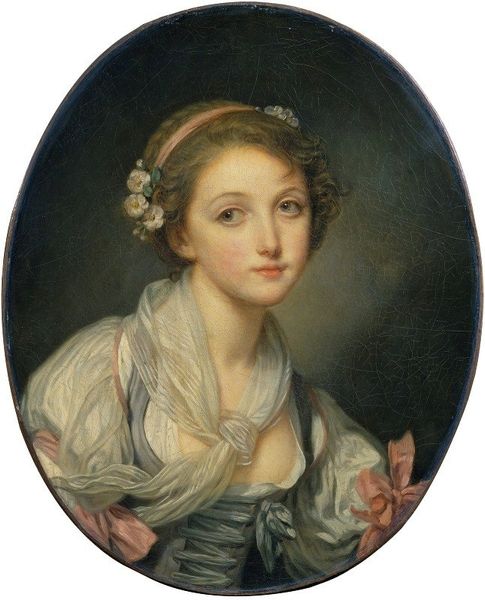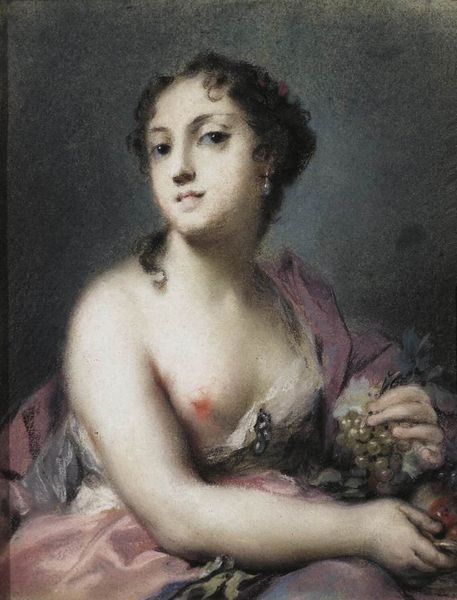
painting
#
allegory
#
painting
#
nude
#
portrait art
#
rococo
Dimensions: 53 x 64 cm
Copyright: Public domain
Curator: Looking at this Rococo painting, entitled "Nymph Followed by Apollo", one is struck by its intimate and ethereal quality. Editor: Absolutely, the softness and vulnerability are immediately apparent. There’s almost an unsettling element present too, thinking about power dynamics during the time. Curator: The painting uses light and color masterfully to create a sense of delicate beauty and implied motion. What material processes contribute to such an aesthetic impact? Editor: The historical context deeply affects my reading. Rococo art catered to an aristocratic elite—the very same folks propping up a system predicated on exploitation, the nude here reinforces accepted norms that upheld such hierarchies. How was this painting perceived then? Was this simply a desirable scene for the privileged gaze? Curator: Precisely, knowing its potential commissioners informs so much about why and how it might have been crafted this way. Examining this as an object—the cost of the pigments used, the implied labour in the canvas preparation—starts revealing the economy in play behind its supposed light-heartedness. Editor: That's valid. Though let’s also account for its potential agency and narrative subversions! Consider its position against the backdrop of increasingly radical voices against power abuses during the period... couldn't there have been a coded intent to hint at this shift? Curator: It could also have merely served as artifice and embellishment to shield viewers from real-world conditions. But it might reveal to what extent social change and intellectual discourse influence art production. I appreciate being invited to think of the labour. Editor: Right? Bringing to light forgotten social implications helps see what visual culture obscures... I feel as though these Rococo visions simultaneously reflect societal ideals but also push the door towards later enlightenment ideas. Curator: I suppose reflecting on art requires understanding how class and cultural context work. The past still casts its reflection. Editor: Yes—analyzing with nuance to reveal hidden histories, ensuring our readings contribute to wider justice frameworks. What seemed frivolous may have revolutionary potential once demystified.
Comments
No comments
Be the first to comment and join the conversation on the ultimate creative platform.
